A Journey Through the History of Church Banners
A Journey Through the History of Church Banners
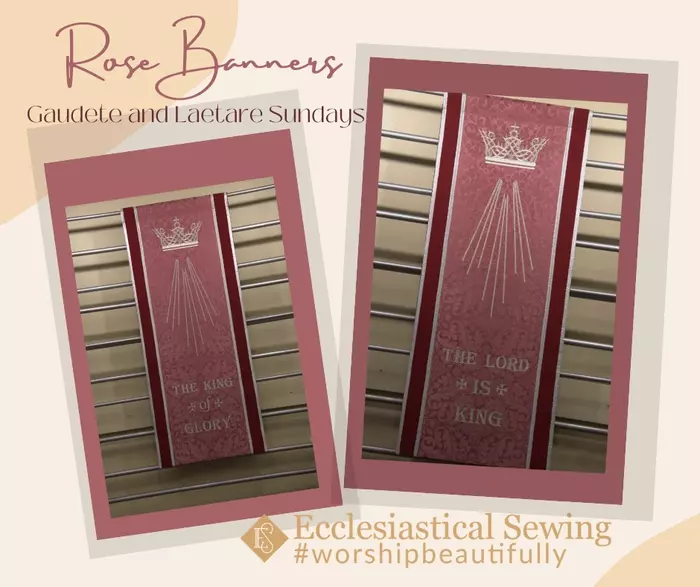
A Journey through the History of Church Banners: Church Banners with their vivid colors and intricate designs, have adorned houses of worship for centuries. These magnificent works of art have served as visual representations of faith, history, and devotion within the Christian tradition. Dating back at least 500 years, the history of church banners reveals a captivating narrative of religious expression, cultural symbolism, and the tireless craftsmanship of dedicated artisans. Join us on a journey through time as we explore the origins, evolution, and significance of these treasured banners.
Origins
The use of banners in religious ceremonies can be traced back to ancient times. In the early Christian era, when worship was often conducted in secret due to persecution, banners provided a means of discreetly identifying meeting places. As Christianity gained recognition and churches became more established, banners began to take on a more elaborate form.
Medieval Period
During the medieval period, church banners evolved into stunning works of art. Crafted from luxurious fabrics such as silk and velvet, they featured intricate embroideries, gold threadwork, and vibrant colors. These banners depicted scenes from the Bible, saints, martyrs, and biblical symbols. As the Church held immense power and influence, banners played a crucial role in religious processions, rituals, and celebrations.
Guilds and the Renaissance Influence
The Renaissance period marked a turning point in the artistry of church banners. Guilds, organizations of skilled artisans, played a pivotal role in their creation. These guilds, comprising weavers, embroiderers, and painters, were responsible for crafting banners with exceptional skill and creativity. The banners became more diverse in style, incorporating elements from classical mythology and humanist philosophy, reflecting the broader cultural trends of the time. One of my favorite banners is from the Great Processional Banner from York Minster. The Great Processional Banner was created with stunning hand embroidery.
Reformation and Counter-Reformation
The Reformation and Counter-Reformation movements in the 16th century had a profound impact on church banners. The Reformation, with its emphasis on simplicity and rejection of elaborate religious displays, led to a decline in the use of banners in Protestant churches. However, in the Catholic Counter-Reformation, banners played a vital role in communicating the teachings of the Church and inspiring devotion. They were used to convey the stories of saints, promote doctrinal messages, and symbolize the power and authority of the Catholic faith.
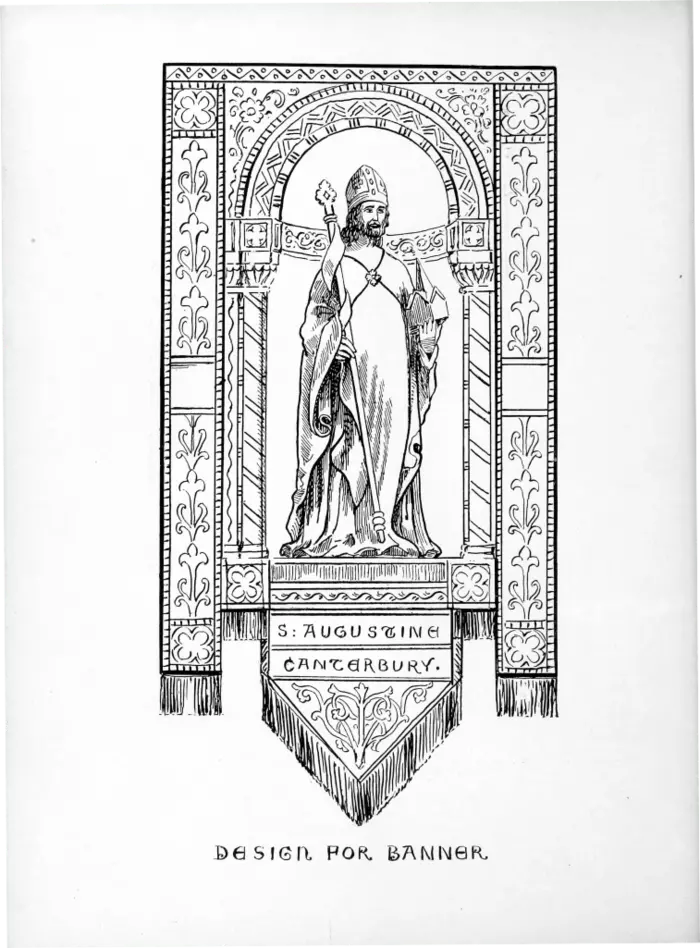
Revival and Modern Times
The 19th and 20th centuries witnessed a revival of interest in church banners. The Gothic Revival movement, with its focus on reclaiming medieval art forms, led to a renewed appreciation for these sacred works. Artists and designers sought inspiration from historical examples and incorporated traditional techniques into their creations. In recent times, church banners have become more diverse in style and materials, embracing contemporary art forms while remaining deeply rooted in tradition. The above image is an example of a banner design from a historic book in our collection. It is a wonderful example of banners that have contrasting orphrey bands along the side edges with detailed and complex finishes at the hem.
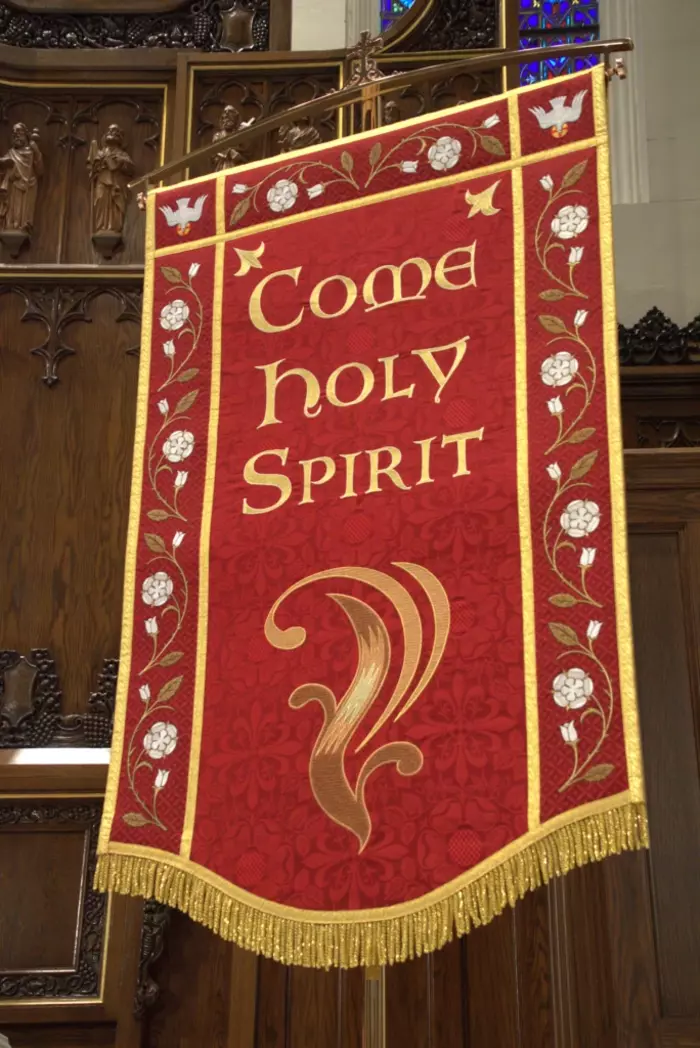
Symbolism and Significance
Church banners have always been rich in symbolism, representing profound spiritual and theological concepts. Colors, such as red for martyrdom or purple for penitence, carry symbolic meanings. Symbols like the cross, the Trinity Symbol, the Lamb of God, or the dove of the Holy Spirit are often featured, connecting the faithful to the core tenets of their faith. Banners also serve as visual reminders of the community’s shared values, history, and traditions. The white banners below feature the Herald Angels announcing the Birth of Christ at Christmas.
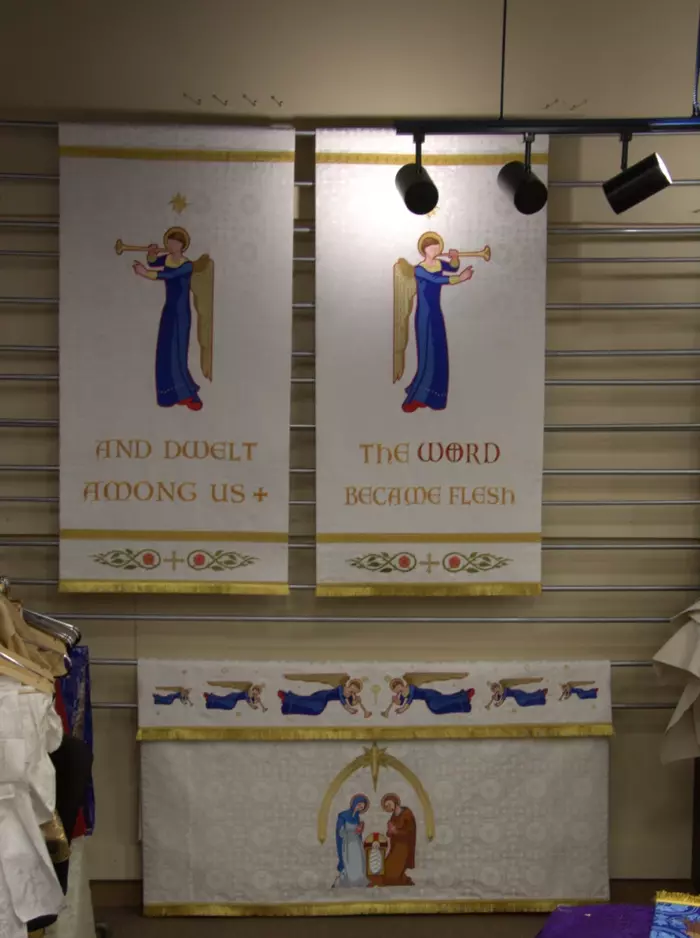
The history of church banners is a testament to the enduring power of visual art and religious symbolism. Dating back at least 500 years, these magnificent creations have witnessed the ebb and flow of history, reflecting the spiritual and cultural aspirations of generations of believers. From their humble origins as markers of clandestine worship to their evolution into awe-inspiring works of art, church banners have always occupied a significant place in the sacred spaces of Christianity. Today, Church Banners continue to inspire and uplift, bridging the gap between the earthly and the divine, and carrying our thoughts to the heavens.
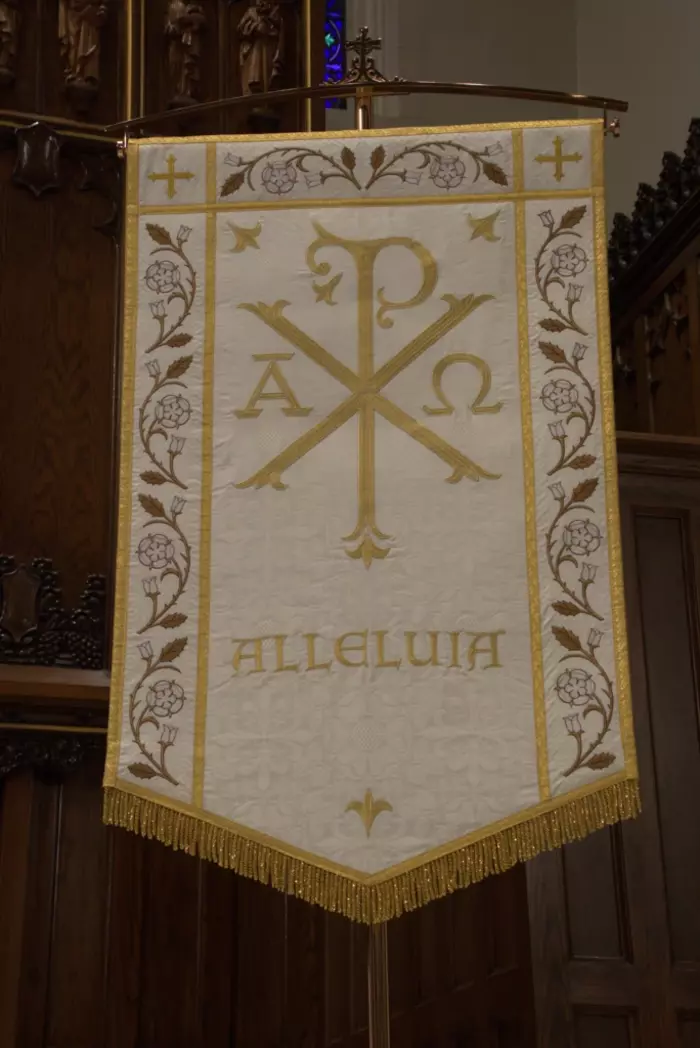
To read more about banners, please be sure to visit our post on the St. Ignatius Mission Banners.
A Handbook for Altar Guilds by Lucy Vaughn Hayden Mackrille
National Altar Guild Convention This Weekend
Introducing my new website Ecclesiastical Sewing






 RSS - Posts
RSS - Posts
You must be logged in to post a comment.